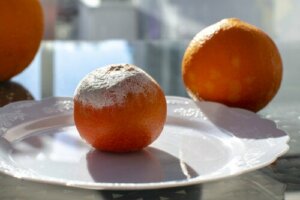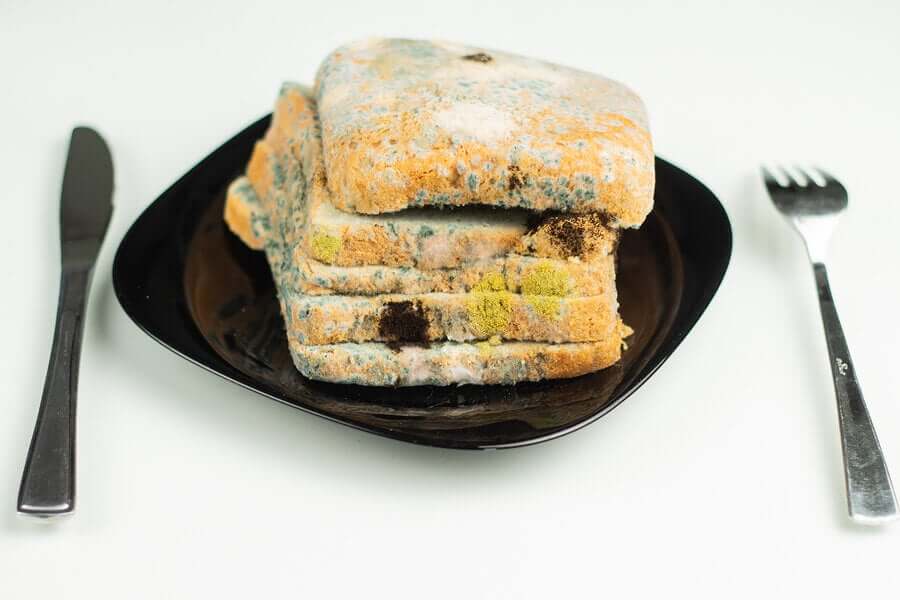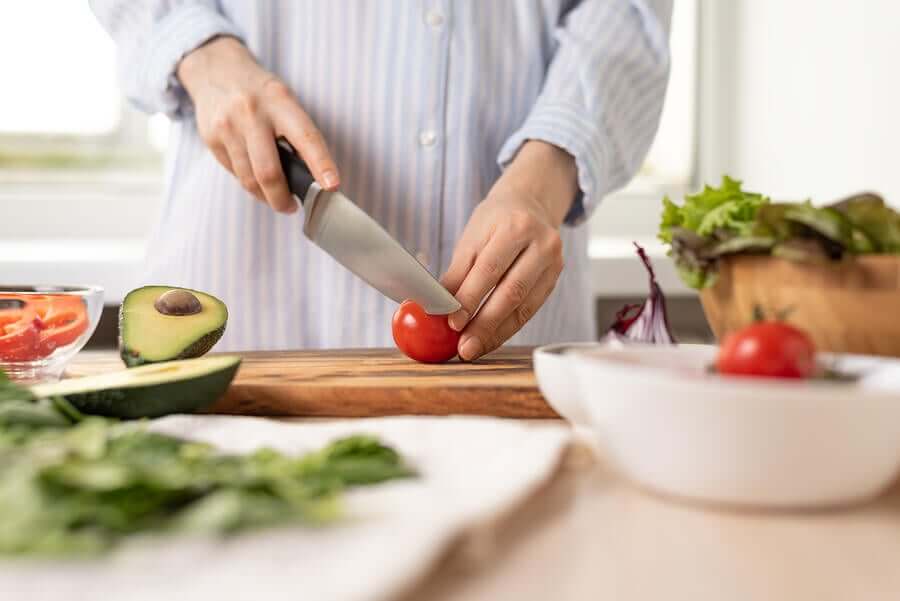Is Mold in Food Dangerous?


Written and verified by the nutritionist Saúl Sánchez Arias
What happens when we see mold in our food?
Sometimes, when we’re on our way to enjoy a delicious snack we notice that it has mold on the outside or even has penetrated the inside of the product. In this type of situation, we must be careful, since eating food with mold can be harmful.
The presence of mold indicates the growth of a microorganism that can be harmful to human health. In fact, eating bacteria, fungi or protozoa can lead to food poisoning.
Diseases caused by fungi
This type of health issue is based on the colonization of the digestive tract by invading microorganisms, or on the deposition of waste products that are toxic to health. The symptomatology, in many cases, is usually intestinal in nature. Vomiting, diarrhea, and intestinal discomfort are quite frequent in these situations.
However, depending on the causative organism, the damage can be more serious. Thus, it may affect the liver, and cause it to develop certain severe health issues that cause serious health complications.
Is it safe to remove mold from food?

Dry or low-moisture foods can be consumed once the mold has been removed from the outside. However, this process isn’t so simple in meaty or moist foods, since the fungi can spread to the inside of the product, causing a health issue after ingestion.
In case of doubt, it’s always advisable to throw the food away when you’ve detected the presence of mold. There are certain exceptions, especially in the case of cheeses, where the appearance of molds or microorganisms doesn’t usually present a health problem. However, such cases are the least frequent.
It should be noted that the presence of mold denotes the existence of a fungus on the outside and possibly on the inside of the product. Fungal infections usually present different symptomatology than bacterial infections, according to a study published in the journal Internist. In this case, the liver is more likely to be the affected organ.
In addition, liver toxicity due to the ingestion of molds is cumulative, i.e., it doesn’t manifest symptoms until the amount of toxicant in the organism is high enough to cause severe injury.
The importance of proper food hygiene

Proper food hygiene is necessary to prevent the appearance of molds. Keeping food under the right temperature and humidity conditions is crucial. In addition, we must separate foods to avoid cross-contamination. Not handling different foods with the same utensils, especially in the case of raw and cooked foods, also eliminates many risks.
On the other hand, it’s important not to break the cold chain and to defrost food properly. Room temperature isn’t usually correct when thawing food; we suggest you carry out this process in the refrigerator.
Exceeding the best-before dates for food also increases the likelihood that it’ll develop surface molds or harbor some type of organism inside.
To minimize these risks, the industry uses preservatives which scientific studies have proved to be beneficial. In some cases, these are natural, such as salt, sugar, and vacuum packaging. In other situations, they resort to the use of chemical elements whose long-term consequences on health aren’t always clear.
This is one of the reasons why we should choose to eat fresh foods instead of over-processed foods. However, the fresh food must always be under correct hygienic conditions.
Also read: Can You Eat Raw Tuna?
What to do if you notice mold in food
Mold growth on the surface of food denotes the presence of a microorganism that, in most cases, is harmful to the human body. There are situations in which it is sufficient to remove this surface layer to consume the food later, but this isn’t always the case.
We mustn’t forget that the consequences of the ingestion of harmful molds manifest themselves in the medium term, through serious health problems. Therefore, when in doubt, it’s better to throw away the moldy food than to decide to eat it. This way, we prevent any possible health hazards.
To prevent this problem it’s best to have good food hygiene. Keeping food at appropriate temperatures and eating it before the best-before date are usually two successful actions to prevent complications associated with the ingestion of harmful microorganisms.
All cited sources were thoroughly reviewed by our team to ensure their quality, reliability, currency, and validity. The bibliography of this article was considered reliable and of academic or scientific accuracy.
- Vehreschild MJ., Cornely OA., Resistant fungi. Internist, 2015. 56 (11): 1271-6.
- Gokoglu N., Novel natural food preservatives and applications in seafood preservation: a review. J Sci Food Agric, 2019. 99 (5): 2068-2077.
This text is provided for informational purposes only and does not replace consultation with a professional. If in doubt, consult your specialist.








